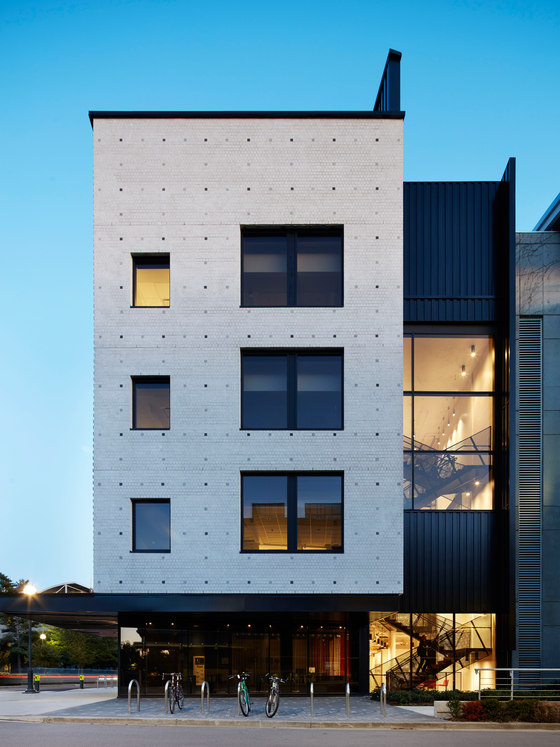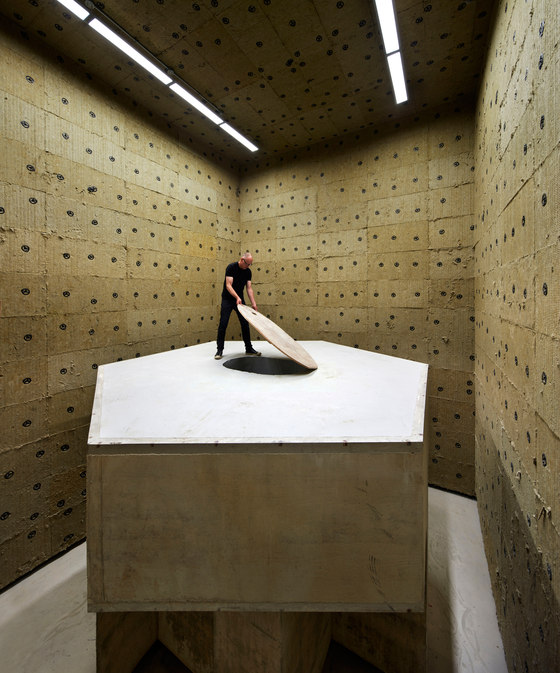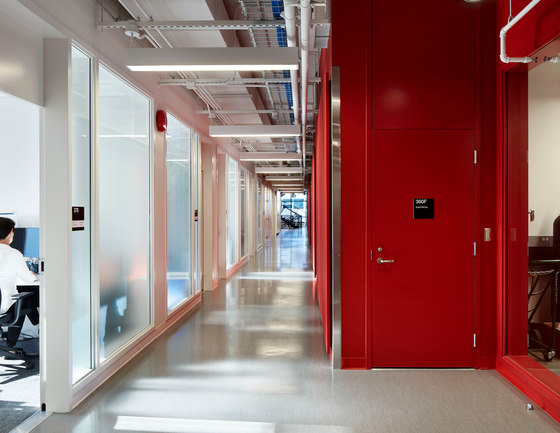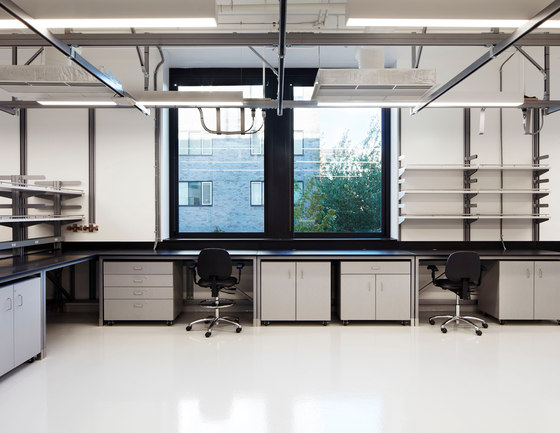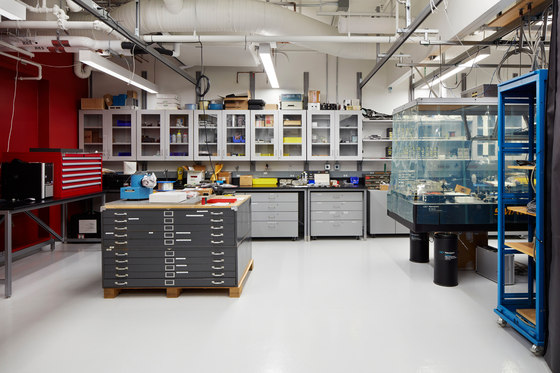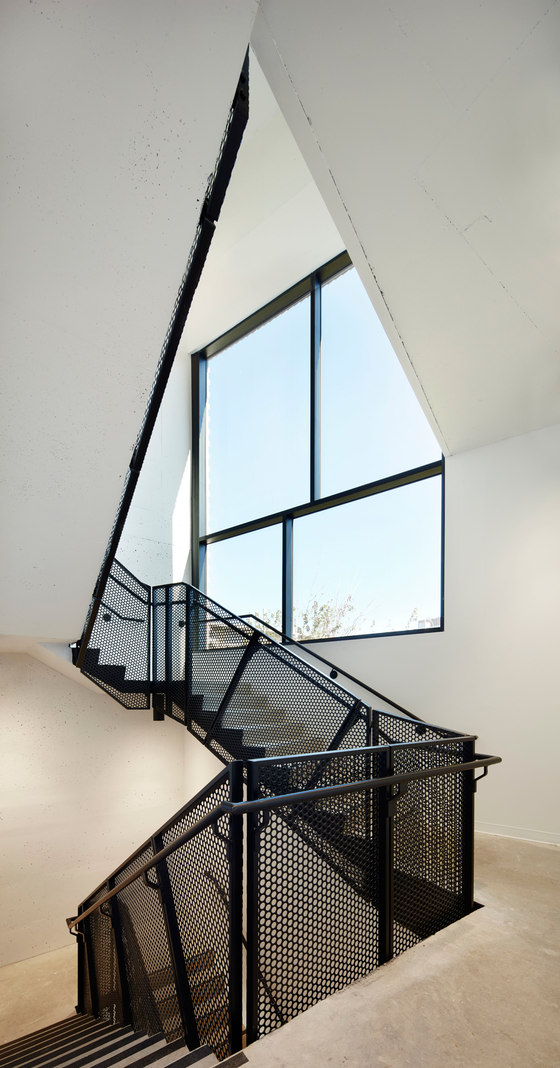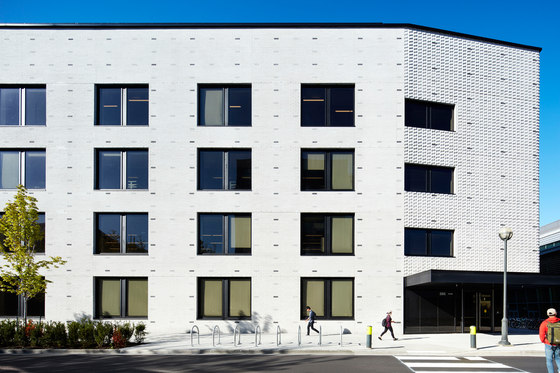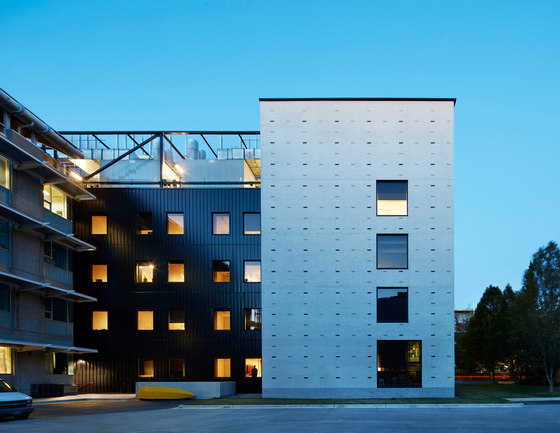The Quantum Matter Institute houses an interdisciplinary group of researchers that study things at the atomic scale. Situated in the Applied Science Precinct of the University of British Columbia (UBC) campus, this slender corner addition is both a gateway and a connector. The QMI creates a new portal to the precinct, serves as a new formal entrance to the Advanced Materials and Process Engineering Laboratory (AMPEL) and collocates quantum researchers for the first time, creating the potential for research synergies in this ground-breaking field. Just as silicone was the basis of a microelectronics revolution, quantum research could lead to new industries in fields such as electronics, solar energy, and medicine.
The QMI creates its own identity while enhancing the integrity of its neighbours. The white brick cladding mixed with black and grey relates to the campus palette while revealing the chemical compound of the crystal lattices that form the foundation for the majority of QMI’s research. The corners of the building have been chamfered as required for site constraints and reveal a crystal structure of corbelled masonry. As if affected by a giant magnet, all of the bricks align from north to south.
Quantum research is best carried out underground because vibrations from sources as insignificant as a footstep can ruin an experiment. QMI has four underground vaults and a series of above-ground laboratories that provide a high degree of control over the environment. To ensure the vibration performance of these predictable spaces, the entire building is decoupled from its site with isolation pads and absorptive membranes below grade and the laboratories are stacked in a reinforced concrete structure designed to be as stiff as possible. The laboratories are designed to support long-term flexibility, acting as re-configurable stages upon which new research activities can unfold.
While quantum experiments flourish in vacuum chambers, the growth of quantum ideas does not. Integration between researchers is essential for new discoveries. Taking inspiration from the crystal lattices – “the interfaces are where things get interesting,” according to one researcher – the building fosters a fluid work flow by laminating predictable lab space with unpredictable offices, meeting rooms and lounges. Every time QMI users enter or leave a floor, they are momentarily taken out of their routine as they pass through a gathering space that skews and transforms the pragmatic. These gathering spaces are located at the junctures where the QMI and AMPEL meet, becoming platforms for social interaction and the cross-pollination of ideas.
The QMI has been registered with the CAGBC and is pursuing certification at the gold level. The project team’s largest hurdle to overcome was reducing the energy consumption required by laboratory process loads. Key strategies included minimizing the number of air changes in laboratories and implementing a fume hood sash management program
What were the key challenges?
Quantum research is best carried out underground because vibrations from sources as insignificant as a footstep can ruin an experiment. Solution: Sectionally the building is designed to achieve increasing levels of vibration performance measured from the top to the basement. Due to the stability of the lowest level the most desirable space in this project is underground. To further the vibration performance, the entire building is decoupled from its site with isolation pads and absorbtive membranes below grade. Vibration sources such as the elevator and primary mechanical room have been moved to the adjacent building.
PUBLIC: Architecture + Communication
Angela Enman, Architect AIBC
Courtney Healey, Architect AIBC
Laura Killam, Architect AIBC
Susan Mavor, CGD, SEDG
Warren Scheske, Intern Architect AIBC
Craig Simms, Architect AIBC, MRAIC, LEED AP
Mike Thicke, Architect AIBC
Brian Wakelin, Architect AIBC, MRAIC, LEED AP
John Wall, Architect AIBC, MRAIC, LEED AP
Structural Engineer: Dialog
Mechanical Engineer: Integral Group
Electrical Engineer: MMM Group Limited
Geotechnical Consultant: Geopacific Consultants Ltd
Code Consultant: GHL Consultants Ltd.
Laboratory Consultant: Argo Architecture Inc.
Acoustic Consultant: RWDI
Project Manager: UBC Properties Trust
Construction Manager: Unitech Construction Management
